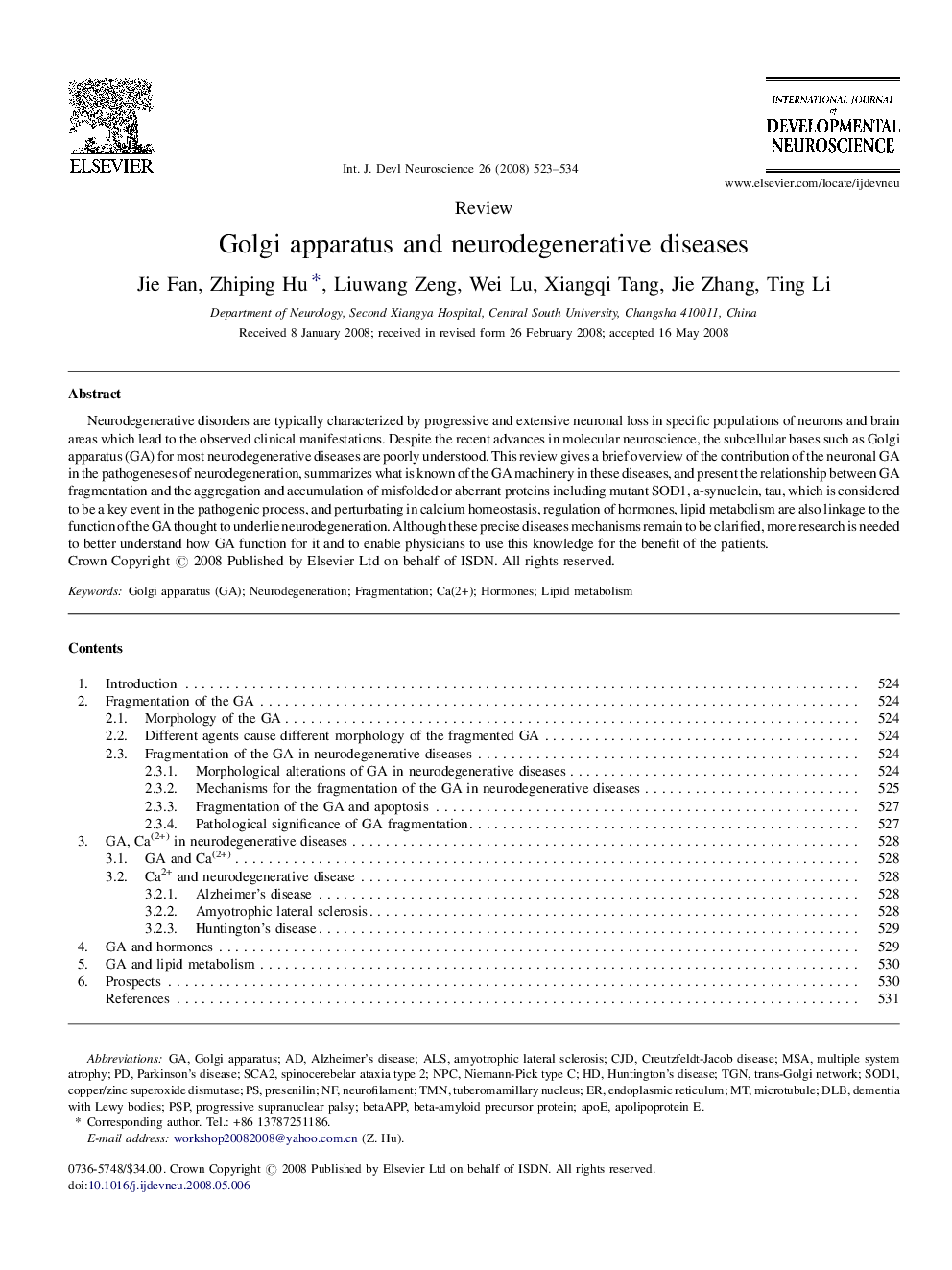| Article ID | Journal | Published Year | Pages | File Type |
|---|---|---|---|---|
| 2787060 | International Journal of Developmental Neuroscience | 2008 | 12 Pages |
Neurodegenerative disorders are typically characterized by progressive and extensive neuronal loss in specific populations of neurons and brain areas which lead to the observed clinical manifestations. Despite the recent advances in molecular neuroscience, the subcellular bases such as Golgi apparatus (GA) for most neurodegenerative diseases are poorly understood. This review gives a brief overview of the contribution of the neuronal GA in the pathogeneses of neurodegeneration, summarizes what is known of the GA machinery in these diseases, and present the relationship between GA fragmentation and the aggregation and accumulation of misfolded or aberrant proteins including mutant SOD1, a-synuclein, tau, which is considered to be a key event in the pathogenic process, and perturbating in calcium homeostasis, regulation of hormones, lipid metabolism are also linkage to the function of the GA thought to underlie neurodegeneration. Although these precise diseases mechanisms remain to be clarified, more research is needed to better understand how GA function for it and to enable physicians to use this knowledge for the benefit of the patients.
